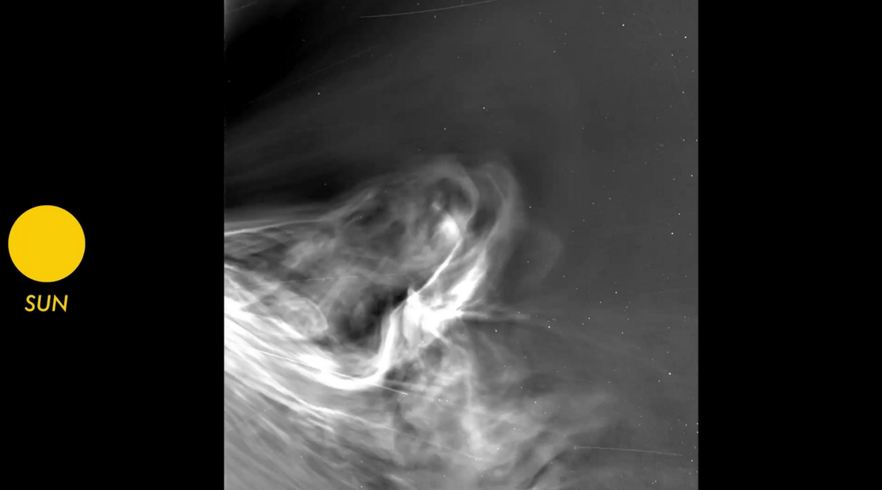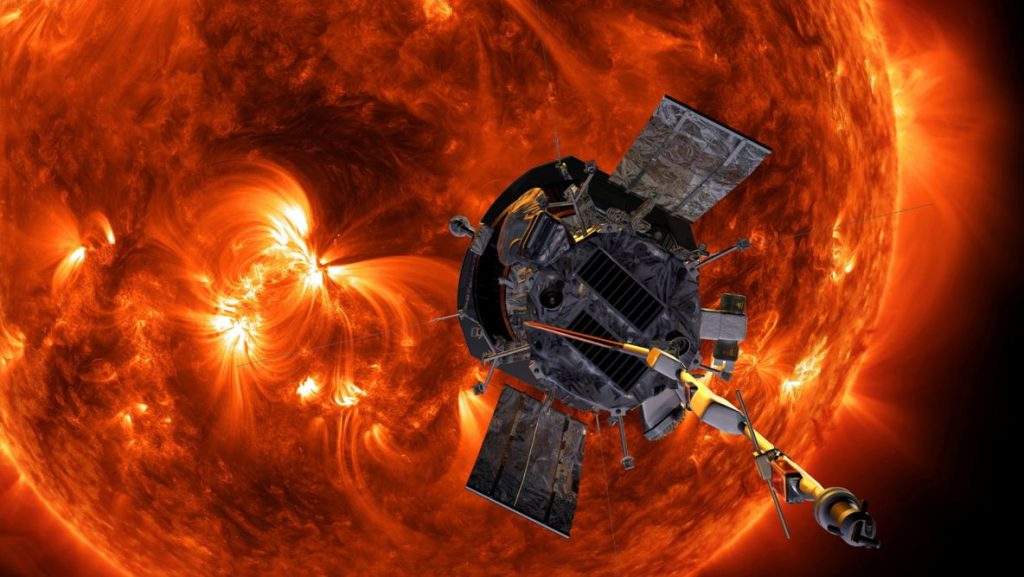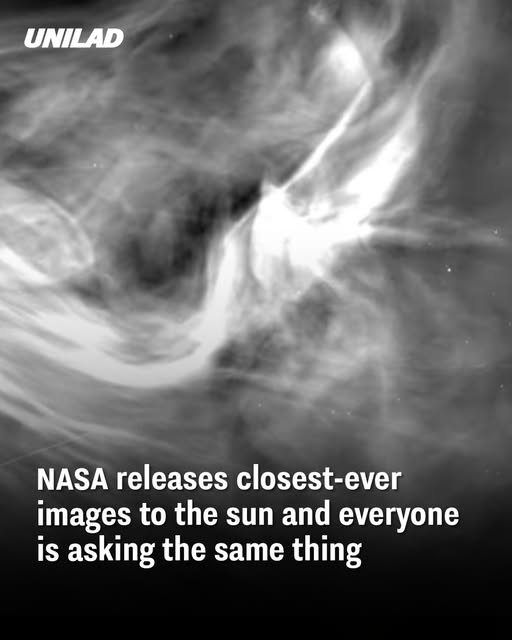NASA released new images captured by the Parker Solar Probe, the spacecraft closest ever to the Sun’s surface. These photos offer insights into the Sun’s outer atmospheere and charged solar wind, fueling both scientific curiosity and social media excitement.
What the Images Show
The released images feature eerie “wisps” of solar material—the winding strands of plasma shaped by the Sun’s powerful magnetic fields. One image reveals glowing tendrils drifting through gaps in the solar corona, creating a mesmerizing, almost surreal portrait of solar activity. Another photo highlights delicate, hair-like plasma structures dancing just above the Sun’s surface. According to NASA scientists, these patterns help illustrate how charged particles escape the Sun’s grasp and stream into space. These visuals not only stun us with their beauty but also carry critical scientific data. They help researchers better comprehend the dynamics of the solar corona, including its heating processes and how solar winds are accelerated.

How Close Is “Closest Ever”?
Since its launch in 2018, the Parker Solar Probe has been staging multiple close approaches—“perihelia”—to the Sun. During its most recent flyby, the probe reached a mere 6.2 million kilometers from the solar surface, flying through the Sun’s upper atmosphere, or corona. That’s roughly eight times the distance between Earth and the Moon—an astonishingly close proximity to such an extreme star. As it travels through this fiery frontier, the spacecraft survives blistering temperatures above 1,370 °C, protected by its specially engineered heat shield. This shield is equipped with thermal sensors that relay data on how solar radiation affects both the probe and the corona around it.
The Data Behind the Glory
While the visuals are captivating, aligned with public intrigue, the mission’s treasure trove lies in its data. Parker Solar Probe is gathering magnetic field measurements, plasma densities, and energetic particle readings to help answer some long-standing questions about solar physics:
- Why is the corona millions of degrees hotter than the Sun’s surface?
- How exactly do solar winds form and accelerate?
- Which mechanisms drive solar flares and coronal mass ejections (CMEs)?
Scientists believe that by analyzing the probe’s real-time data stream, they will soon crack these mysteries, enabling more accurate space-weather forecasting for Earth’s satellites and power grids. Moreover, the probe offers a window into fundamental physics happening across the universe, such as magnetohydrodynamic turbulence and particle acceleration.
Social Media Buzz and Public Engagement
The release of this imagery triggered a wave of social-media activity. NASA’s official post on X (formerly Twitter) showed one of the corona images with the caption:
“These structures, seen above the Sun’s edges, help us understand how solar wind emerges from the corona.”
In reply, numerous users shared awe-struck reactions. Comments ranged from “this is actual cosmic art” to playful puns like, “It’s like the Sun’s doing its own hairdo today!” Citizen scientists and hobby astronomers also joined in. They used tools like NASA’s Sun to Earth visualization portal to observe how solar activity—plane whispers and gusty wind—might impact space weather affecting Earth.
What Lies Ahead for the Mission
The Parker Solar Probe has a mission timeline extending into the 2030s, aiming to perform over 25 close solar approaches. Each perihelion gets increasingly nearer, culminating in a projected distance of approximately 4 million kilometers from the Sun—just 6.7 solar radii from the surface. Future data releases and imagery are anxiously awaited by the scientific community, eager to validate theories on solar heating, magnetic reconnection, and solar wind sources. In the years ahead, NASA will continue to unveil discoveries, possibly transforming our grasp of stellar physics and situational awareness of space weather.

Final Thoughts
NASA’s latest images from the Parker Solar Probe offer both visual spectacle and scientific gold. The fiery plasma filaments and ghostly coronal wisps redefine how humanity views its closest star—and its dynamic, ever-changing atmosphere. As the mission progresses, everything from our theoretical models to practical space-weather forecasting stands to benefit. Keep your eyes on the Sun—literally and figuratively—because this probe is only just beginning to reveal the secrets of our star.

















